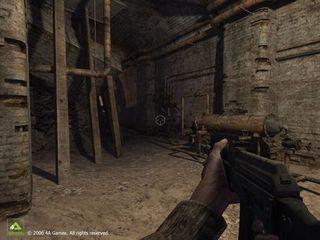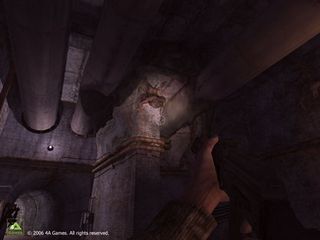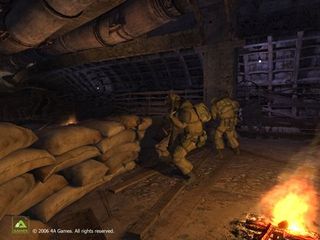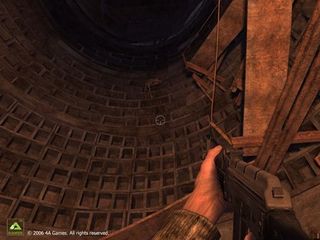Metro 2033: The Last Refuge - first look
Comrade-iation
If the waves made by BioShock are still rippling within the industry, Metro 2033 may be the first game to wash ashore. The setup: In 2011, a worldwide nuclear catastrophe decimated civilization. Moscow citizens retreated to the tubes, building a network of city-states along the underground subways to avoid the surface, where radiation spawned breeds of psychic supermutants: sedan-sized bats and rats, hulking ogres, and ghostly anomalies.

These abominations have kept humanity hiding under the covers for two decades, and during our demo, they had me checking the walls for a nite-light, too. I was introduced to the docile-sounding “librarians” while walking through a library’s ruined reference section (with no printing presses, books become very valuable in Metro). The creatures are vicious if you try to hammer the trigger, but won’t attack as long as you keep looking directly at them. Just when I thought I’d safely crept away, a winged beast plucked one of our comrades and crashed back through a window, throwing him outside.
Aside from the beasts, 4A is focusing on forging what it calls “emotional believability.” Simple features are used to drive immersion, like using a handheld journal to plot routes and mark objectives, jabbing yourself with a syringe to restore health, and watching your gas mask slowly frost up when you’re wandering the surface. All of this has us hopeful for what 4A Games is shooting for: a Half-Life-like, narrative-focused experience similar but wildly different from the apocalyptic PC game many members of the dev team helped create in 2007, STALKER: Shadow of Chernobyl.

It’s encouraging to see one fewer developer feeling the pressure to shoehorn a multiplayer mode into its story-driven shooter, and we’re hoping an atmospheric, personal single-player experience will emerge as a result.
Q&A: Andrew Prokhorov, Creative Director at 4A Games
What aspects of Metro will make it stand out among other shooters?
Our idea is that no single feature can create a game, no matter how interesting this feature is. The unique atmosphere of the game is needed. A game becomes enjoyable only when I forget that I’m playing a videogame, when I put myself in a character’s place, when I believe I live in his world. If a player laughs with game characters, if he feels like he’s suffocating in the real world while his character is suffocating in a gas mask with worn-out filters on the surface of a ruined city, if he feels the breath coming from a monster’s mouth - then we’ve reached our goal.
Sign up to the 12DOVE Newsletter
Weekly digests, tales from the communities you love, and more

What are the strengths of the graphics engine you’ve developed?
There isn’t a single static light source; basically, light bulbs “shake and break.” The number of light sources in a frame is limited by common sense, not by programmers. But fully dynamic lighting isn’t an end in itself; it allows us to create the game in the process of playing it, without wasting time on recalculation of lightmaps, shadows, and other stuff. We also use visualization technology to give the game a film-like image, and we’re adding 64-bit HDR with eye adaptation, depth of field, motion blur, and PhysX.
What homemade weapons and tools can players expect to wield in the apocalypse?
There are quite a lot of them - a revolver that can be upgraded to a carbine, a multi-barreled crossbow, and an air-powered rifle. There is also a self-made machine gun (despised by our publisher) called Bastard. It works awfully, always jamming and making players feel like throwing it away! The transportation in Metro deserves special mention: trolleys that range from basic to muscle-powered to underground tanks.


+ Unconventional enemies and design inside a BioShocky, insulated setting. Impressive lighting and engine tech. Homemade weapons that we hope will be customizable.
– We only saw a few snow-covered surface stages to contrast the underground gameplay. Giving players outdoor areas will be key.
Dec 19, 2008

Legendary Zelda dev "wasn't too pleased" about working on A Link to the Past as it robbed his enjoyment of playing the finished game: "I still really don't want to play that game"

Making an open-world game like GTA 6 bug-free is "a lot different" than something like The Witcher 3, says former Rockstar dev
Most Popular



